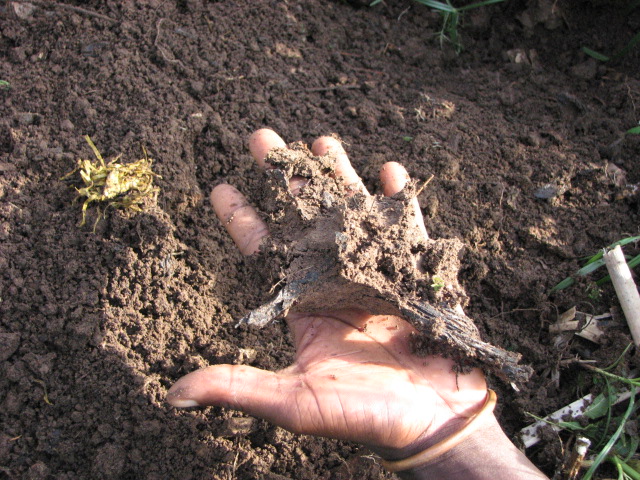Final maturing / Susana Secreriat / Flikr / CC BY 2.0
Providing plants with good quality fertilizer is a good way to help combat and prevent plant disease.
Fertilizers
Standard fertilizers
The most important thing you can do for your plants is to fertilize them. This is preventative care for your plants and can help you avoid a lot of problems.
Most garden fertilizers include small amounts of the minor elements magnesium, calcium, sulfur, iron, and boron, as well as the three essential plant nutrients of nitrogen (N), phosphorus (P), and potassium (K). The N-P-K ratio on the package indicates the percentage of each essential nutrient by weight.
Nitrogen is crucial for new growth to occur. Since nitrogen is a water-soluble nutrient, it is washed away by rain or utilized by plants and microbes in most soils.
Phosphorus helps plants transmit energy between their roots, leaves, and blooms, stimulating root growth. Due to factors like soil temperature, microbial activity, and pH, phosphorus can sometimes be present in the soil but is not available to plants.
Potassium aids the movement of water, minerals, and carbohydrates within plants. It’s also in charge of promoting early development, enhancing hardiness, and boosting resistance to insect pests and illnesses.
Environmentally friendly fertilizers
Producing significant amounts of food necessitates a lot of fertilizer in the agricultural industry.
Soils without fertilizer are less productive, and crops develop slower since fertilizers result in more productive soils and faster-growing crops.
Fertilizer is consequently essential for ensuring that enough produce is grown to feed huge populations.
Any fertilizer administered to crops is intended to stay on the crops for as long as possible, however, chemical fertilizers used today frequently wash away following rainfalls.
Typically, too much fertilizer is applied, and the crop is unable to absorb it all. Excess fertilizer can wash away with rainwater and end up in habitats where it has a negative influence. It is, in reality, a major source of pollution in the world’s soils and waterways.
Excess fertilizer in soils and streams can reduce oxygen levels and make these environments less habitable for the creatures that live there.
Furthermore, when fertilizer is washed away, it loses its value and becomes an expensive waste.
Environmentally friendly fertilizers (EFFs) are now being researched to minimize the waste and harmful environmental implications of regular fertilizers.
According to Envirobites, EFFs are fertilizers that are designed to stay on crops for longer periods of time, giving the plants more opportunity to absorb them.
Using EFFs has a number of advantages.
They aid in the reduction of pollution by keeping fertilizers on the crops. EFFs are best applied once and then slowly absorbed as the growing season proceeds, eventually releasing the nutrients contained within. Because agricultural pollutants are progressively polluting coastal seas, any quantity that may be decreased is desirable.
Furthermore, some of the materials used in EFFs can aid in the capture and conversion of carbon dioxide, a greenhouse gas, from the environment into organic matter. This improves soil health and can help repair degraded land. More water is retained in healthier soils, and the pH is appropriate for crop growth.
EFFs can potentially assist in reducing nitrogen oxide (NOx) emissions, which contribute to air pollution. This gas is typically formed by the breakdown of nutrients and fertilizers, so if less fertilizer is applied, the gas is less likely to be produced.
While using EFFs has various advantages over using regular fertilizers, each technique of generating EFFs has its own set of advantages and disadvantages. The method some EFF coatings are made has significant environmental consequences, including higher gas emissions during production. EFFs are also more expensive, limiting their application to specialty crops for the time being.
Although EFFs are only sprayed once and slowly released over time, the timing of their release may not coincide with when the plants are most in need of them.
Currently, the majority of EFFs are released during the initial phases of plant development. To synchronize release times to optimal plant growth, more study on ideal release circumstances is needed.
The benefits and drawbacks of each form of EFF must be balanced against one another to decide which technique offers the most overall benefits with the fewest undesirable side effects.
While EFFs have the potential to be used in more environmentally friendly fertilizer applications, they must be further refined before they can be used on a big basis.

